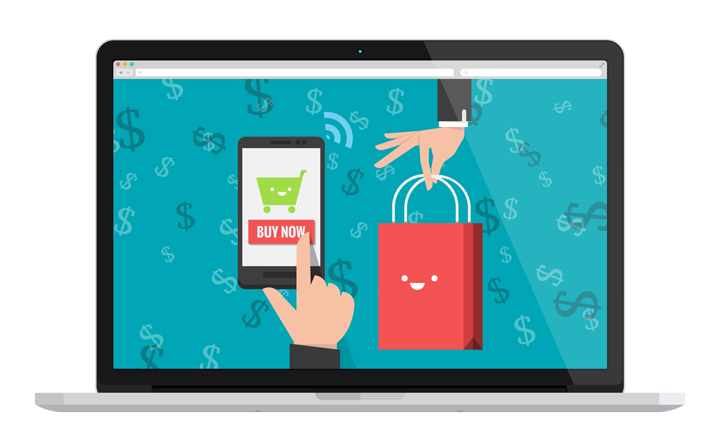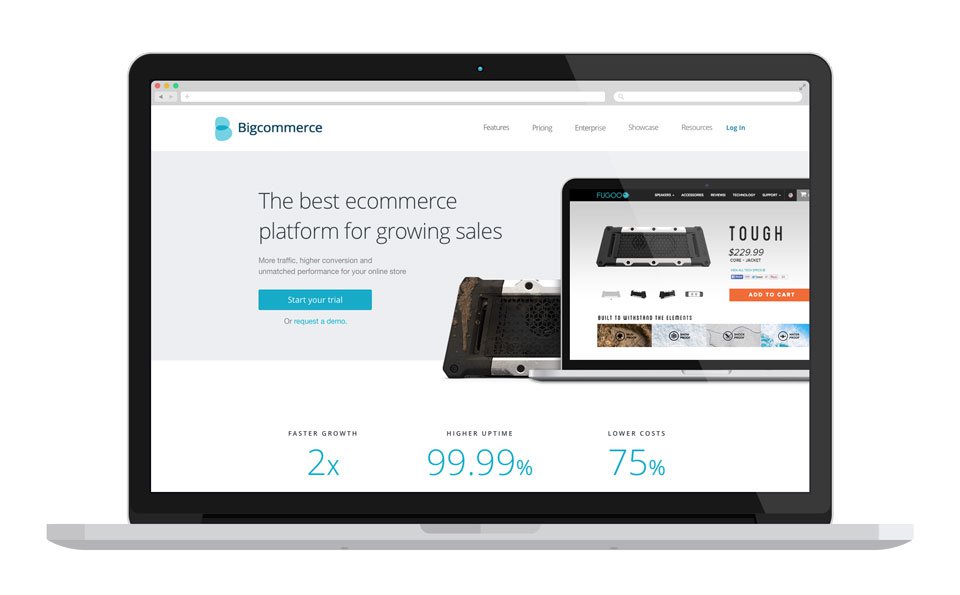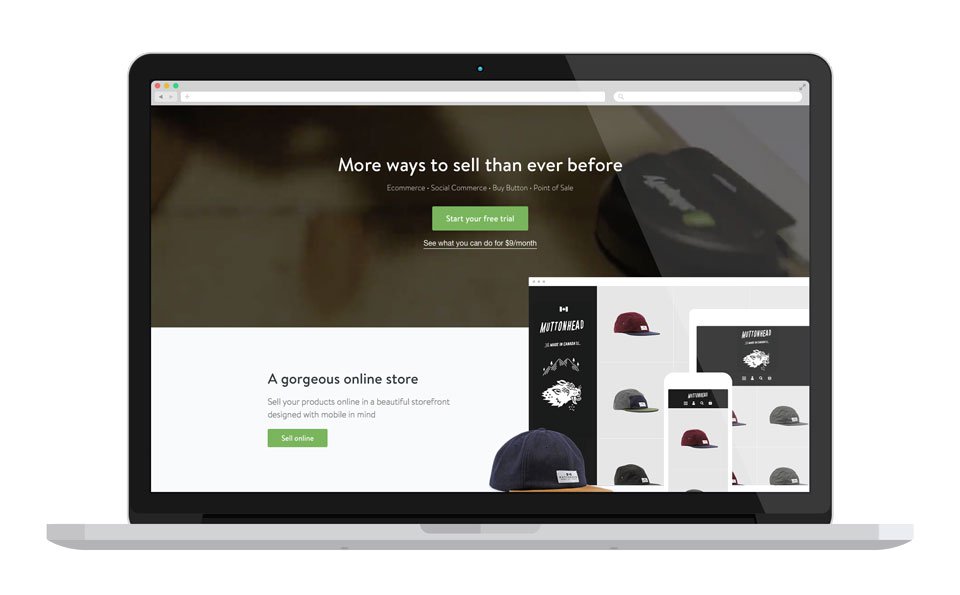Introduction

As consumers look to convenience, speed and contactless options for purchasing good and services, making sure your business is optimised for e-commerce is a smart move that will keep your revenue flowing 24/7.
E-commerce is convenient for your business - but more importantly for your customers. Tiny shifts in human behaviour have a big impact on the ease of transactions and the reduction in barriers to purchasing behaviour. If your business is enabled to make things as simple and as easy as possible for customers on every platform you operate in, you can maximise transactions from existing customers and give them a place of clarity and convenience.
In fact convenience will trump many other things for online transactions, with ease overtaking price and product when it comes to actually converting the sale. The fewer clicks between your customer, their payment and delivery the better at the moment. If you have strategically sorted your SEO, your Website and your social media and are utilising the power of all three, you may well be ahead of the game from less nimble bigger operators.
Finding what's right for your business
Now is the time for you to get serious about implementing an e-commerce solution for your business, so let’s begin by understanding what your business needs. Start by asking some questions to begin to narrow down the functionality required. Consider the following for what your business does:
- What type of products or services are you selling? Which of these would be able to convert to online, or a home delivery style service?
- How many products/services will you have online?
- Do you need product variations like sizes and colours?
- Where will you sell to? Australia-wide, international, local only?
- Does your business have intense seasonal peaks in transactions?
- How will you collect payment? Paypal, Stripe, or through your bank’s merchant facility?
- How will you calculate shipping and delivery costs?
- Do you want to package products, cross sell and up-sell or are you download and subscription based?
- Is the store part of your online presence in your website, is it your entire online presence, or will you use a third party platform like Facebook Marketplace, Ebay, Gumtree or Etsy for sales?
- What are your growth and scaling plans for the business in what timeframe?
- What other businesses could you collaborate with to strengthen the offering?
To make e-commerce work for your business, you also have to think about the capacity that exists within the business and who will be managing the system on the day-to-day. You need to make sure you use a system that aligns with the levels of skill available. If you are looking for a fully integrated solution, consider functionality and features in these areas:
- Search engine optimisation
- Social media integration
- Blogs
- Responsive, mobile-friendly design
- Email newsletter integration
- Accounting software integration
Pricing and support
Ultimately, the decision will often come down to price, however, what you can afford to spend to buy and run e-commerce within your business needs to be considered against what it will cost you in sales to not have an online option that is customer friendly.
Other considerations to build into the actual cost to your business are technical skills. Can you deploy and run the system with your existing staff? Will you need to outsource any aspect of the project roll out and ongoing use. If so, account for that in your platform choice and the total cost of ownership. And when you compare the pricing arrangements of each option you consider, note the subscription periods, levels of service provided at each price point and always check for any cancellation fees or hidden costs.
Technology has brought a lot of benefits, but has also given business a reliance on 24/7 availability. If all you have to process payments is an e-commerce, system downtime is a nightmare for small business, and you need to be confident that if and when problems arise, there is someone there to help you get back up and running as swiftly as possible. It’s important to look into the levels of support each vendor offers to determine the best fit for your business. Also consider the modes of support offered – phone or live chat, email only, support forums, webinars or forums. Choose the format that you feel most comfortable with that best suits you, your staff and business model.

Safe, smart, and point of sale
There are a few terms you need to understand when making the decisions about your e-commerce solution. System security is a valid consideration both for the business and the customers and you want to ensure that the system you choose has strong security features that enable safe payment over the internet. This is usually handled through cryptographic protocols like Secure Sockets Layer (SSL) encryption that ensures private information sent through your website cannot be accessed by unauthorised people online, with 128 bits being the industry standard. Other important factors include backup and restore capabilities in case something goes awry.
There’s a whole list of features now available with e-commerce platforms to help small business market and sell their products and services. Choose the one most applicable to your needs. Make sure the option you choose is mobile-friendly, and look for other features such as customer reviews, special deals, abandoned cart functionality, gift certificates, social media connectivity, loyalty programs, live chat and multilingual support, integration with sellers such as Amazon and eBay. In the platforms discussed below, some of these options are evaluated.
You need to be clear on how each platform would integrate with your existing system/website and how you want to run it plus the back-office capabilities needed to handle your distribution model, now and into the future. Another important factor is the choice of payment methods. You may want to start with credit card-only but may later need a payment gateway, so look for flexibility in your chosen platform.
If your business has bricks and mortar operations like an actual store in parallel to your online presence, you’ll want to choose a platform that integrates with your existing Point of Sale (PoS) functionality and utilises real time inventory. That way if you are doing a limited pick up service for instance you can use your online functionality for payment and have customers collect at the physical storefront. Harmonising your brick and mortar stock levels with your online store also means you won’t have any awkward moments where you sell products you can’t fulfill.
E-Commerce solution options: Top 3
There are a number of great e-commerce platforms that have the potential to take your business online. If you have a Wix, Weebly or Squarespace website, you are able to build a shopfront using their existing platforms which will instantly integrate with Paypal, Stripe and Square. If you built your own site you should be able to do the set up, if not, get your web developer to help you get set up. The three options below represents an unendorsed exploration of the most prevalent platforms in the Australian market for a more robust e-commerce solution. Of those represented, Shopify is consistently reviewed as number one in service provision for e-commerce and is very much designed for small business and can be built with its own web presence simply and easily. Bigcommerce is an Australian product, and is similarly a strong contender. Woocommerce is particularly good with Wordpress websites, and using their free plugin adds an e-commerce store. All of these solutions as well as Weebly, Wix and Squarespace will work well with your business, but as always, the right solution is the one which resonates best with you, your skills, and your customers.
BigCommerce

This solution features impactful website templates with lots of user appeal. It also offers good customer support, great ready-to-use tools and strong social media capability. It integrates with common apps like Xero, Freshbooks, MailChimp, Google Analytics, Ebay and Zopim (a live chat feature). Bigcommerce is fully cloud-based (web-hosted) eCommerce software. You only need a reliable internet connection and an updated browser (Chrome, Firefox, Safari) to run it. Depending on your plan, Bigcommerce offers easy integration with over 40 payment processors. This includes commonly trusted gateways like PayPal Express Checkout, Square, and Stripe. Paypal in particular has seen some advancements within Bigcommerce, including a more seamless payment experience. Their support is offered across myriad options including a resource centre, live chat, email and phone, as well as several merchant education opportunities such as webinars, community forums and social media.
Shopify

With a reputation for being one of the easiest e-commerce software solutions to use, Shopify is known for its performance. It can handle high volumes with its unlimited amount of bandwidth and features a great range of tools to help manage your social media presence. Shopify is feature rich. It’s also simple to use from a business perspective but more importantly from a customer perspective the carts are easy to use, resulting in less abandoned carts. 70+ payment gateways are supported including new currencies such as Bitcoin, and for global customers, taxes are calculated for all regions at checkout automatically, as is shipping.
Shopify also offers decent CRM options and lots of support templates, and complete social media integration. All Shopify plans come with a fully functional 14 day trial with no setup or cancellation fees. While their plans are offered on a month-to-month basis, users can opt to subscribe for a 1-year contract, payable up front, for a 10% discount, or 20% for a 2-year contract. Shopify offers phone, email, and live chat support in addition to a whole slew of other resources, including a support centre, knowledge base, discussion forum and a Shopify ‘Experts’ page where you can find experienced professionals in design, marketing, development, and photography. It’s clear that Shopify puts time and effort into customer relationship development and support which is undoubtedly part of the reason it is such a widely used and highly regarded product.
WooCommerce

If you have an existing online presence based on WordPress you may wish to consider WooCommerce, a free plug-in that adds e-commerce functionality to your Wordpress site. It’s user-friendly and suits businesses that have a small number of products. WooCommerce is an open source platform that is free to download. But since it runs best on a WooTheme, keep in mind that you may end up paying for a design template and other plugins. If you are already hosting your own website, that expenditure will greatly reduce the cost of operating WooCommerce, be sure however, to factor in other costs, such as integrating payment processors such as PayPal, and the add-ons your particular business might require. In reality it’s still likely to be cheaper than the other two cloud hosted services. WooCommerce is a lean product that has many additional plug ins, and because its Wordpress, is strongly optimised for SEO. Cart functionality is good with automated taxes and shipping, basic reporting and analytics. In terms of support WooCommerce does not maintain a dedicated support team, but instead users can access forums and online documentation. WooCommerce realistically is designed for existing Wordpress users, who will find it simple and compatible with the systems they know.
Video case study
Delivery and Fulfillment
When getting excited about your e-commerce options don’t forget the very real need and cost for robust fulfilment and delivery. Consider these questions and make sure it is very clear to your customers what to expect and what to do to get their goods once they have ordered and paid for them.
- How are people going to get their goods (especially if perishable or fragile);
- Is your inventory management able to operate in real time to ensure there is adequate supply;
- what guarantees have you with timing of delivery if any;
- how are you going to manage refunds or exchanges;
- if you are offering click and collect, are you staffed and able to make that service smooth;
- again, who could you potentially partner with to do local deliveries to make it more cost effective.
E-Commerce is a mandatory business tool that is essential to your customers being able to fully utilize your offerings wherever they are located. The good news is that the options available are now well developed with several iterations in the market, and increasingly designed to be simple and seamlessly integrated into your digital toolset alongside social media, email lists and with built in SEO.
Yes, there is a cost involved and needs to be factored into your budget. Deciding which option to use may be a good opportunity to review and update you whole suite of digital assets and brand, or it may be as simple as signing up, setting up, and hearing the virtual cash register ring. Think strategically about the whole customer journey from consideration of purchase to when they open their package, and design a process that is as simple, clear, cost effective and easily implemented as possible.

E-Commerce is no longer an aspirational ‘nice to have’, it’s a mandatory business tool that is essential to your customers being able to fully utilize your offerings at their leisure wherever they are located. The good news is that the options available are now well developed with several iterations in the market, and increasingly designed to be simple and seamlessly integrated into your digital toolset. Yes, there is a cost involved and needs to be factored into your budget. Deciding which option to use may be a good opportunity to review and update you whole suite of digital assets and brand, or it may be as simple as signing up, setting up, and hearing the virtual cash register ring.

